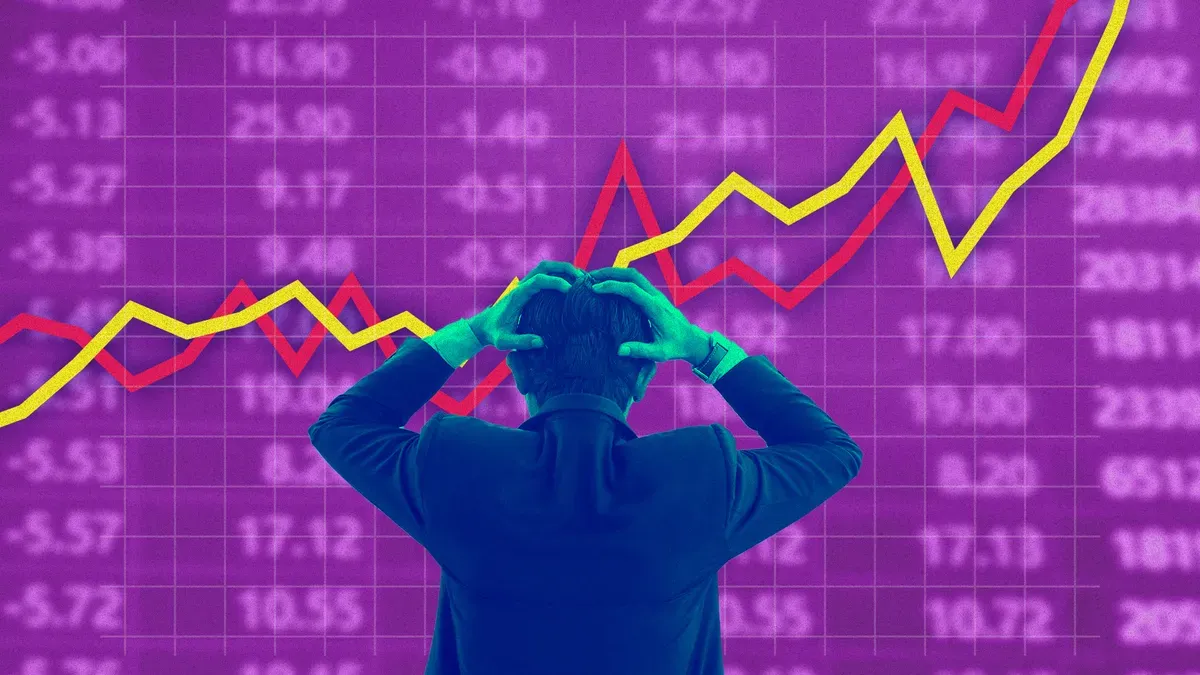Investors are seeking clarification in the wake of recent data surprises.
Analysts have issued a warning about the possibility for important data releases to provide a further damage to investors' early-year confidence as the U.S. financial markets stumble into a critical phase.
Ahead of statistics on nonfarm jobs on Friday and the consumer price index on Tuesday, stocks and bonds have recently fallen. Because of a series of indicators last month that suggested the economy was considerably stronger and inflation was much higher than most had previously expected, investors are anxiously and nervously anticipating such reports.
The Dow Jones Industrial Average has already lost all of its gains from the first few weeks of the year due to concerns that a strong economy could lead to tighter monetary policy. Investors are increasingly placing bets that the Federal Reserve will increase interest rates even more than forecasted by officials in December. Jerome Powell, the Fed chair, this week's statements have added credence to this anxiety.
Investors haven't quite given up on the idea that inflation is about to drop substantially, either. While longer-term Treasury yields—which increase as their prices decline—remain below their highs from last October, both the S&P 500 and Nasdaq Composite are still up for the year.
Without discounting the results from last month, several investors have asserted that they were probably skewed by one-time events, such as January's exceptionally warm weather or seasonal adjustments that obscured poorer non-adjusted numbers.
Yet, investors typically don't think that these elements could persist until a subsequent cycle of data. This makes the upcoming period crucial because it could either reinforce concerns that inflation is still headed for the Fed's 2% objective or compel a more painful reconsideration similar to the one that caused severe market losses last year.
As stated by Brian Jacobsen, chief investment strategist at Allspring Global Investments, "you do have a reversal in very short order, so usually with the next reading," if data has been affected by seasonal adjustments.
Because of the slowing economic growth and the unclogging of pandemic-related supply chain disruptions, Mr. Jacobsen still believes that inflation is on the decline. But, he said that he would be willing to "give up" on that belief and that the markets in general "might be tremendously upset" if data emerged that did not support the notion that January's number was an exception.
Recent data on employment, expenditure by consumers, and service sector activity have all handily above expectations, defying forecasts of an economic recession.
Yet the most startling part of the report was the inflation numbers. In January, price growth exceeded expectations. However, there were also significant modifications to preceding months due to revised seasonal adjustments, which revealed that inflation was significantly higher than initially estimated at the end of the previous year.
Following the Fed's most recent policy meeting on February 1, Mr. Powell stated in a press conference that the inflation rate for services, including housing and energy, was running at about 4% on a six-month annualized basis. This group has received a lot of attention from Mr. Powell and other Fed officials because they believe it to be particularly sensitive to wage costs, which interest rate rises are intended to lower.
In order for non-housing services to decline to 3% or lower and still fulfill the Fed's overall goal, goods and house inflation would need to return to their pre-epidemic levels. At the press conference, Mr. Powell identified this category as a cause for concern because it wasn't decreasing like other components of inflation.
But only a few weeks later, things appeared to be much worse. According to the Fed's preferred individual expenditures price index, inflation in services other than housing and energy looks to be now running at a six-month annualized pace well above 5%. In the meantime, prices of products outside of the erratic food and energy categories also sharply increased in January after declining in prior months.
This week, Mr. Powell testified before senators and admitted the change in the data. Yet he said that warm weather was probably to blame for some of the reversal in inflation trend. He also said that policymakers would consider the upcoming statistics before deciding whether to raise their next interest rate increase from the previous 0.25 percentage point to 0.5 percentage points.
Analysts emphasized that some economic readings in the upcoming days will probably be more significant than others.
Investors would be concerned if data indicated that the labor market was still strong since it would suggest that inflation pressures were still present. Yet, it would also include some positive news, indicating that a recession is not about to happen. Also, it might not persuade investors who think that inflation can return to the Fed's aim without a significant rise in unemployment.
According to Jan Nevruzi, U.S. rates strategist at NatWest Markets, if CPI data indicates minimal change in actual inflation, it would convey a clearer message to investors and boost the likelihood of a 0.5 percentage point rate increase at the Fed's upcoming meeting on March 21–22.
Meanwhile, other investors continue to hold the view that it would take time for rate hikes to impede the economy; this position would diminish the significance of additional solid news in the coming days.
According to James St. Aubin, chief financial officer of Sierra Mutual Funds, families have plenty of money, so rising interest rates haven't had as much of an impact on their ability to spend as they would have if they had been using credit cards to pay for their purchases.
That lessens the effects of rising the cost of borrowing, according to Mr. St. Aubin. The entire impact of a given Fed rate increase may not be felt by the economy for 12 to 18 months.

Subscribe to our newsletter!
As a leading independent research provider, TradeAlgo keeps you connected from anywhere.








